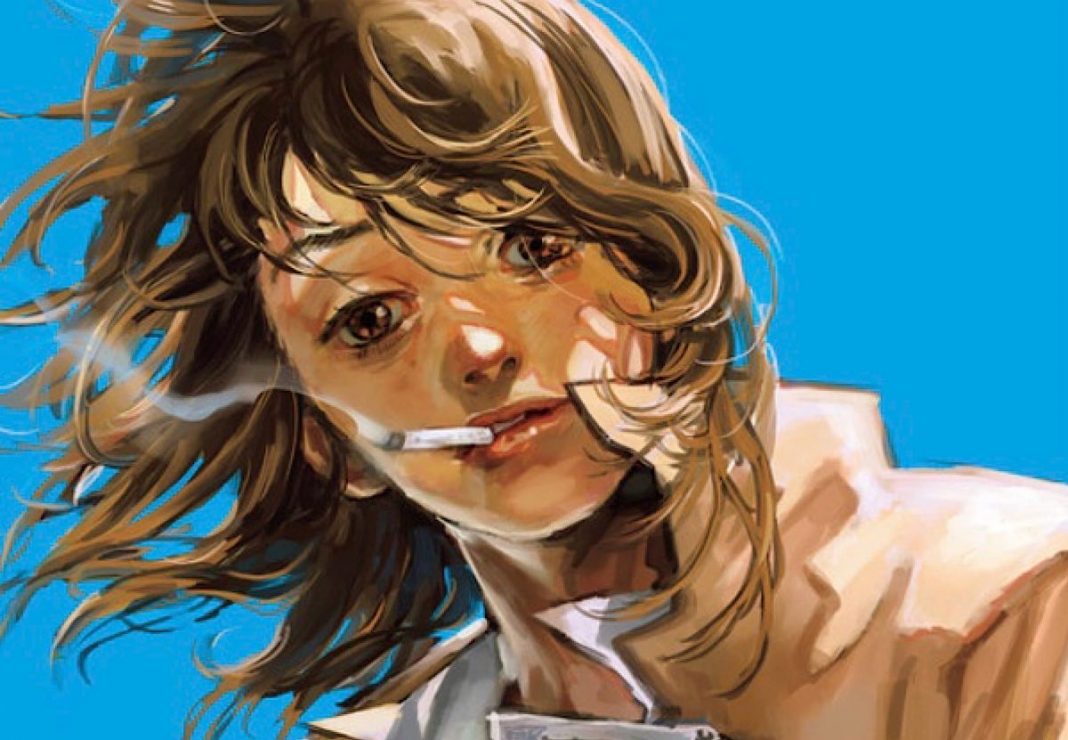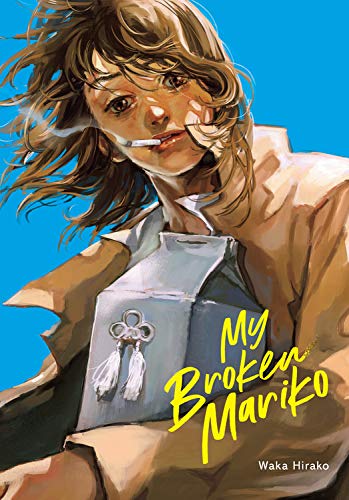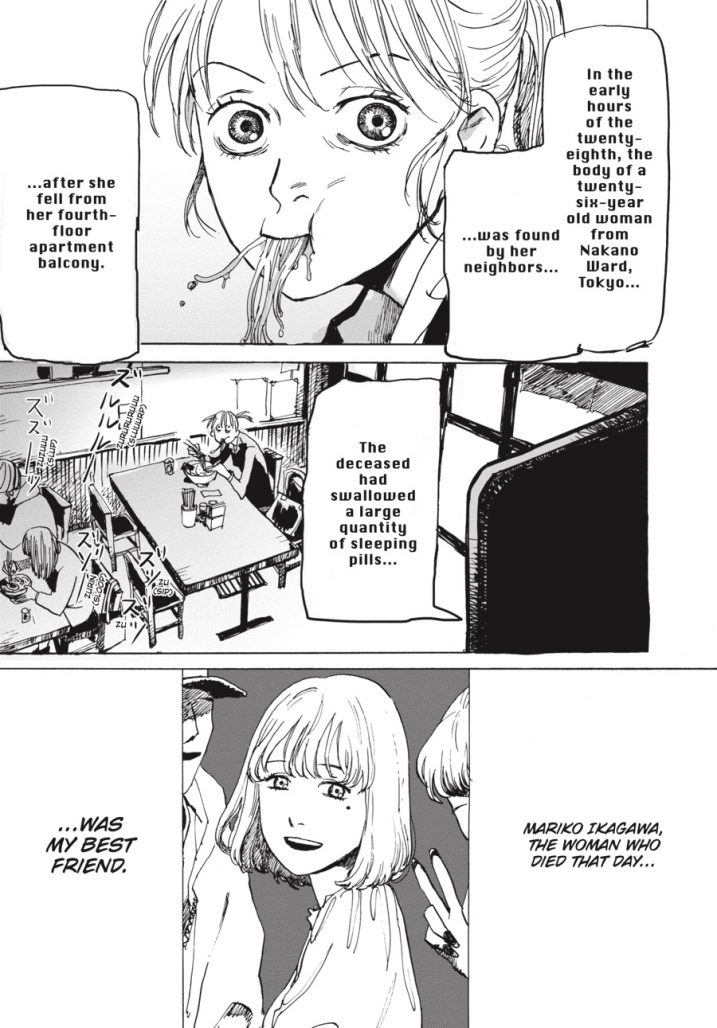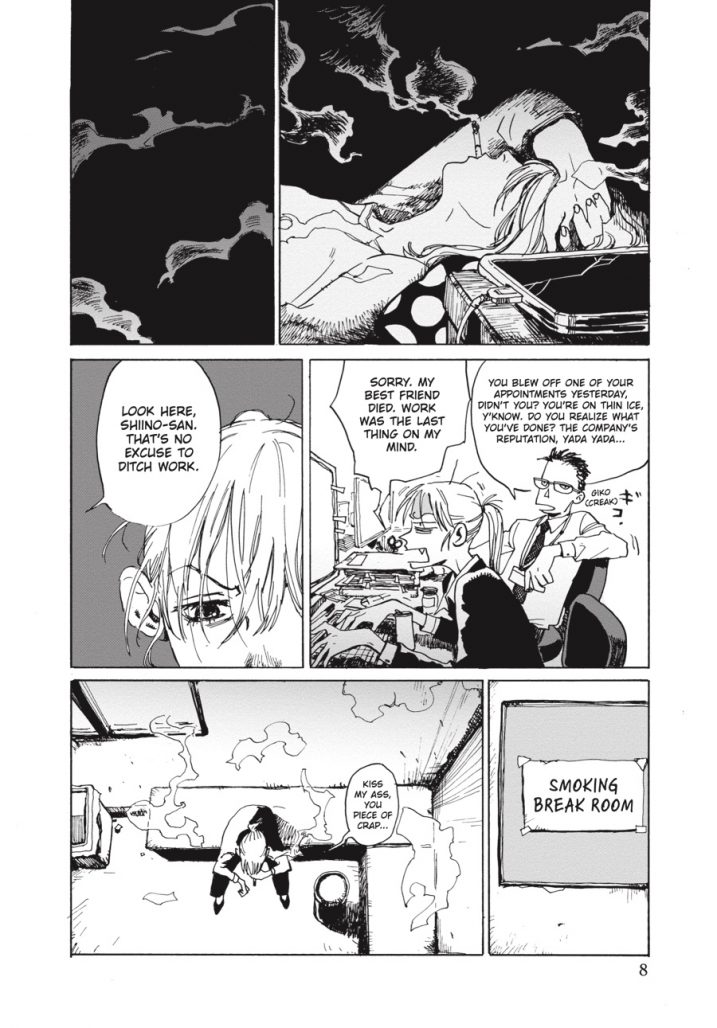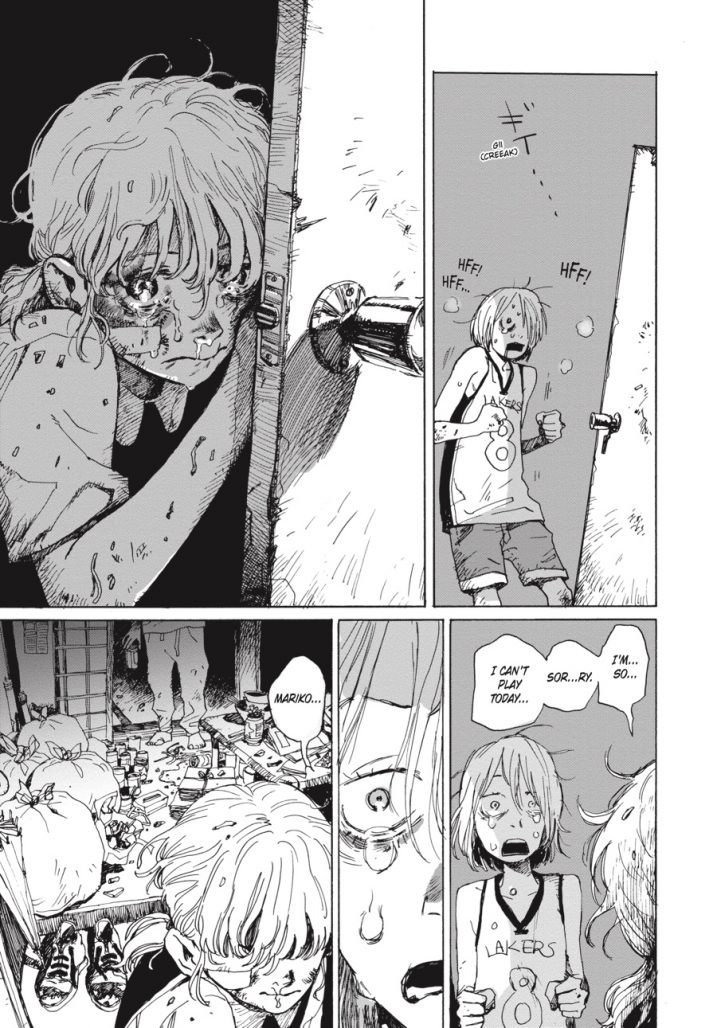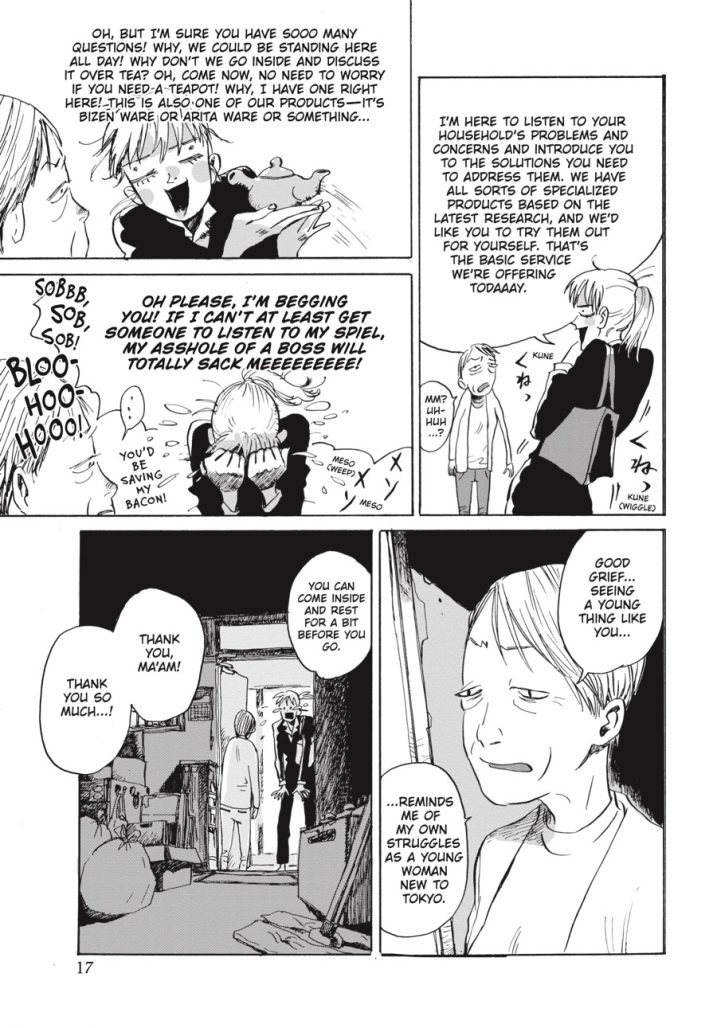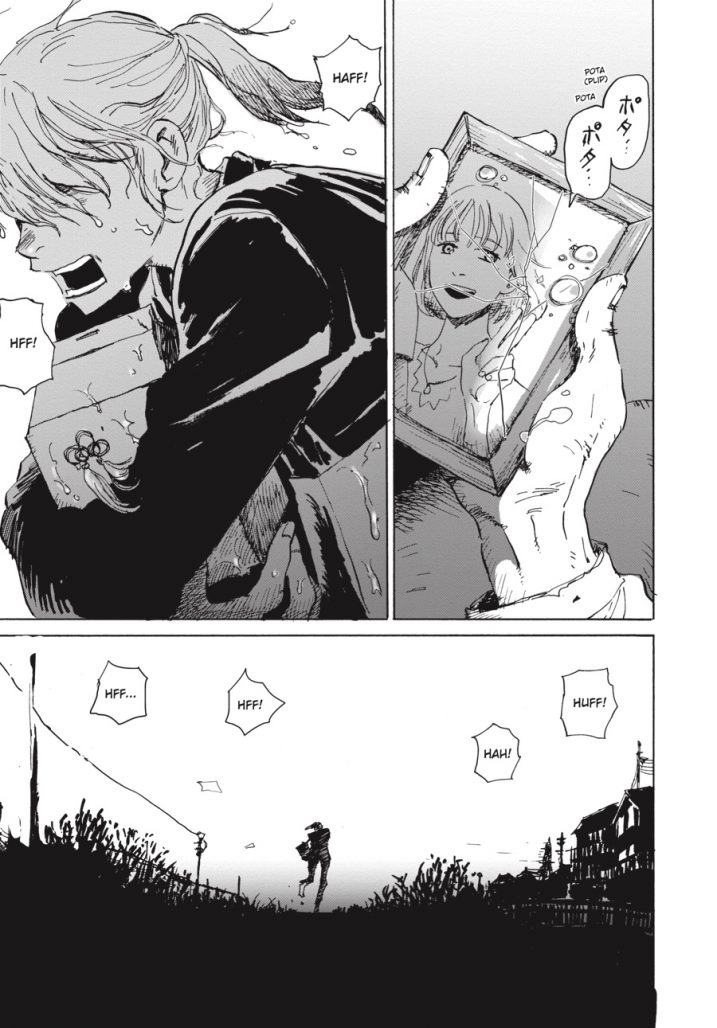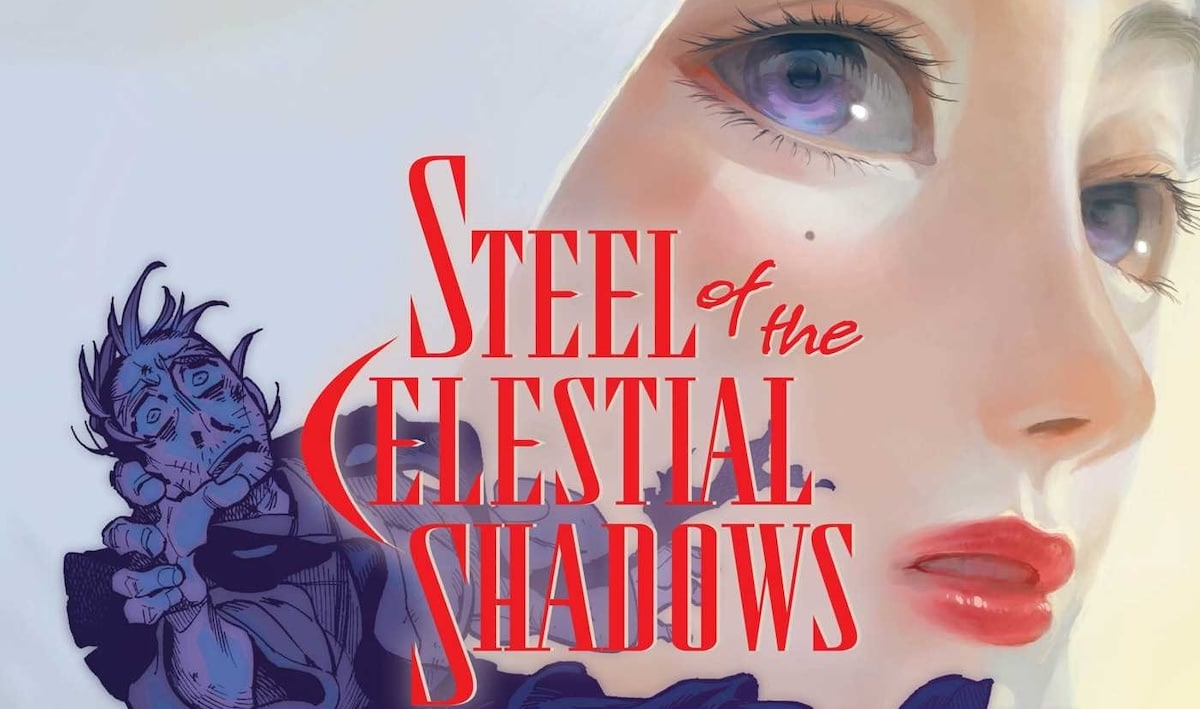My Broken Mariko, the debut manga by Waka Hirako, is a raw and searingly emotional account of domestic violence, guilt and grief from the perspective of an intimate observer.
Tomoyo Shiino learns of her best friend Mariko’s suicide from a television news report. Devastated by Mariko’s death and familiar with the domestic abuse her friend endured, Shiino finesses her way into the parents’ home and steals Mariko’s ashes. She proceeds on a road trip to scatter the ashes while processing her grief.
Hirako excels at capturing the intensity of guilt that survivors of suicide experience. Her sketches are unfiltered expressions of pain and empathy; loss and grief in My Broken Mariko is an open-ended, chronic condition that alters the trajectory of the lives of the survivors.
The Beat talked to Hirako (with the help of freelance translator Jenny McKeon) on the challenges of bringing such a powerful story to the written page.
Nancy Powell: Can you provide some background on how you came to draw manga?
Waka Hirako: I’ve loved drawing since I was a child, and I always enjoyed reading manga and watching anime and movies, so I naturally started thinking about stories as I went about my day. I’ve always had tons of manga that I want to create, but I wasn’t confident that I’d be able to do it for a living, so I didn’t really take any concrete actions toward making it happen.
But after I graduated high school, I started posting my drawings and manga on the internet just for fun, which fortunately led to being discovered by someone from my current editing department. For a few years after that, I sometimes ran into setbacks in life or indecision on how to proceed, but I finally managed to make my debut as a manga-ka with a one-shot story in 2018. My Broken Mariko is my first published book.
Powell: This is your English language debut, and it happens to be on a very serious subject matter. What prompted you to tackle the topic of suicide and physical abuse?
Hirako: As far as the topics of suicide and abuse, I think the most fundamental inspiration came from my mother, who is an abuse survivor herself. She sometimes told me about her experiences with the physical and emotional abuse she was subjected to by both of her parents. Her experience with abuse had an immeasurably large effect on her entire life; as I was caught up in the storm that she carried within her, I witnessed the resulting rough patches, turmoil, and hardships up close while she raised me.
Throughout my life, I wondered how I could ever dispel the outrage, sadness, and helplessness I often felt when my mother told me about her experiences. “If only I could have been her mother instead…” “I wish I could’ve at least been her friend when she was a kid…” “Why can’t I do anything about her past?” “Who should I direct my hatred toward about this, and how?” And so, I ended up having the protagonist of this story act out just a few of those thoughts and feelings in my place.
In addition, when I started drawing this story, there were reports on the news every day about an incident in Japan in which a six-year-old girl died due to her mother’s abuse. Such heartbreaking incidents still occur everywhere to this day, and there are countless victims whose stories are never reported at all. I never knew what to do when I learned such painful facts, so I hoped that perhaps I could begin to confront that situation in the form of this manga, or at least continue to think about it.
Powell: How long did it take for you to create the manga? And was there a lot of research involved to capture Shiino’s journey from grief to a kind of guilt on survivorship?
Hirako: I think it took about six months from the conception and planning to the completion and publication of the final chapter. Rather than doing additional research, I drew the story while reliving the feelings and emotions that were already in my heart, and mixing those with my imagination.
Powell: What were some of the challenges you faced while working on My Broken Mariko?
Hirako: It’s only four chapters long, but since it was my first serialization, I had a tough time wrangling with the pace. I was also still sounding things out and doing a lot of trial and error in terms of the drawing process, so overall I suffered with a serious lack of confidence. I also ended up pouring my emotions into every single character I drew, so it was emotionally taxing as well.
Powell: You capture the friendship between Mariko and Shiino so intimately. Was the intensity of their relationship modeled on personal experience?
Hirako: Out of necessity, I wound up drawing on my personal experience to a certain extent, but this is not an autobiographical story. I think the experience of female friendship depicted in this manga is probably somewhat universal, to a degree.
Powell: The rawness of the drawings in My Broken Mariko add to the emotional impact of the immediate story. Was that how you conceived it or did you modify your style for this particular story?
Hirako: I didn’t have a clear understanding of my own basic drawing style before I drew this manga, nor do I understand it now that I’ve finished. My ideal style naturally changes based on the kind of story I’m thinking up, so it’s actually a little bit troublesome how inconsistent my style is, even for me.
When I decided to draw this manga, I wanted to make it look like a movie from the 90s or the early 2000s. I figured the best way to do that might be to make it as realistic as possible by building up thin lines to make shadows and using lots of shades of grey, rather than using thick, intense lines and high contrast, so that’s what I tried to do. It was tough, and took a lot of time.
Powell: Which artists have influenced you the most and why?
Hirako: It’s difficult to answer, since I’ve been influenced by so many different people. As I said above, the style I’m envisioning changes based on the story I’m trying to draw, so the artists who influence my style end up changing a lot too.
I think a few of the artists who have an effect on my art no matter what are Shel Silverstein, who I read when I was very young, and Monkey Punch, since I’ve been reading Lupin the Third since I was around 10 years old. As far as painters, I’ve always liked Van Gogh and Munch, among others. And I’ve been watching the works of Hayao Miyazaki and Mamoru Oshii since I was little, so I think they left a major impression on me and my art. There are many others, too.
Powell: What have been some of your favorite manga and comic titles?
Hirako: A few of the manga I read during impactful periods of my life that have influenced me include: Fruits Basket by Natsuki Takaya, Boku dake ga Shitteiru (“Only I Know”) by Sakumi Yoshino, Himitsu no Kaidan (“The Secret Stairs”) by Kita Kanno, One Piece by Eiichiro Oda, the Lupin the Third series by Monkey Punch, Ashita no Joe (“Tomorrow’s Joe”) by Tetsuya Chiba, works by Osamu Tezuka like Black Jack and Ayako, the Nausicaa of the Valley of the Wind manga by Hayao Miyazaki, Vagabond by Takehiko Inoue, MONSTER by Naoki Urasawa, Ishi no Hana (“Stone Flower”) and Akkanbee Ikkyu by Hisashi Sakaguchi, Ping Pong and Number Five by Taiyo Matsumoto, and Children of the Sea and Witch by Daisuke Igarashi.
There are many foreign comic artists that I love and works that have influenced me, too. I particularly enjoy Batman comics that center around Joker, since a lot of them tend to be very artistic. Recently, I’ve especially loved the collaborative works by Jillian and Mariko Tamaki; I’m eagerly looking forward to a Japanese translation of This One Summer.
Powell: What projects are you currently working on? And will we see a continuation of Shiino’s story in the future?
Hirako: I’m planning on drawing up a storm in order to release a collection of short stories next year. After that, there’s a story I’m thinking about making as a long-form series. I hope I can make it a reality somehow.
I don’t know whether I’ll draw a continuation of Shiino’s story, but there is a side story I wanted to tell about the character Makio-kun who appears at the Narita Shop, so I think it’d be nice to make a spinoff about him sometime since it didn’t fit into the main story.
Check out an excerpt provided by Yen Pressof the first chapter of My Broken Mariko by Waka Hirako below.
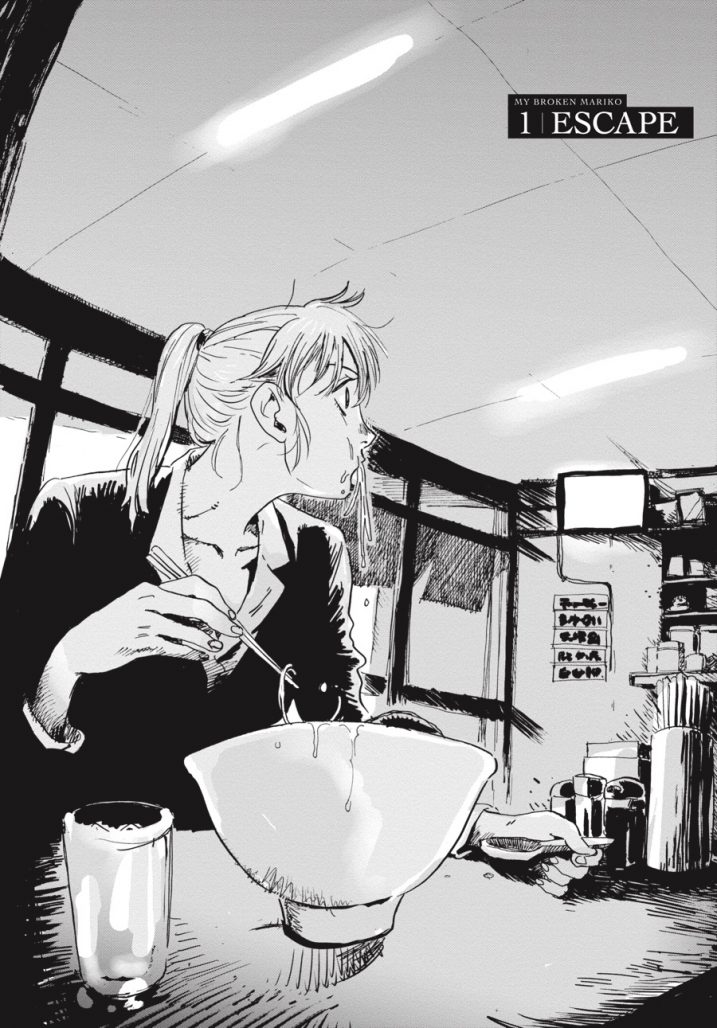
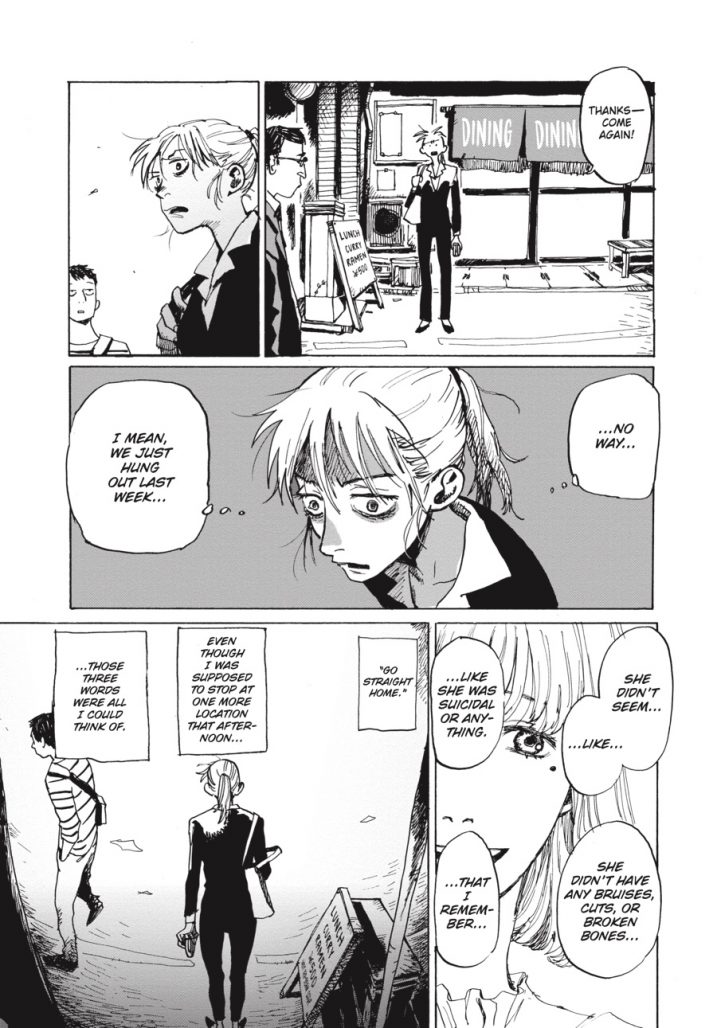
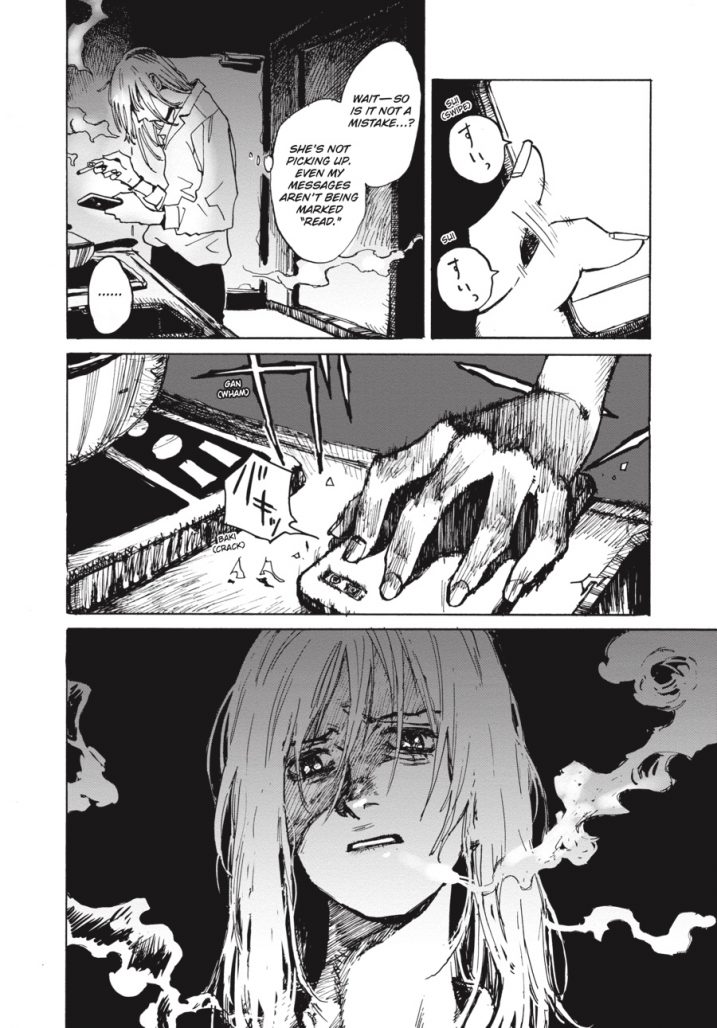
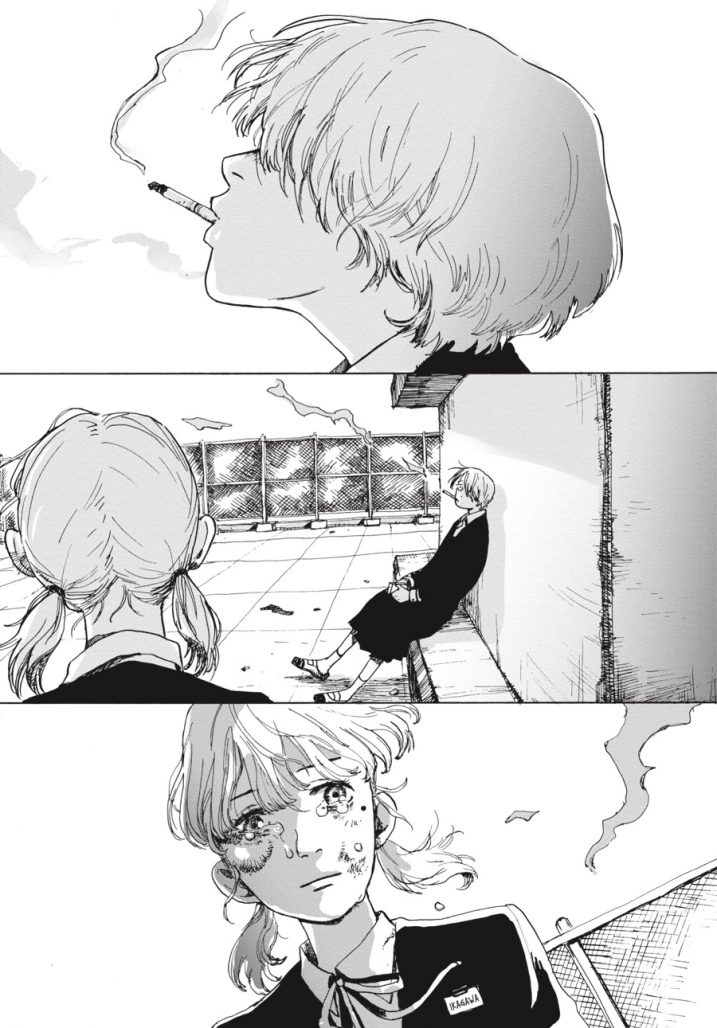
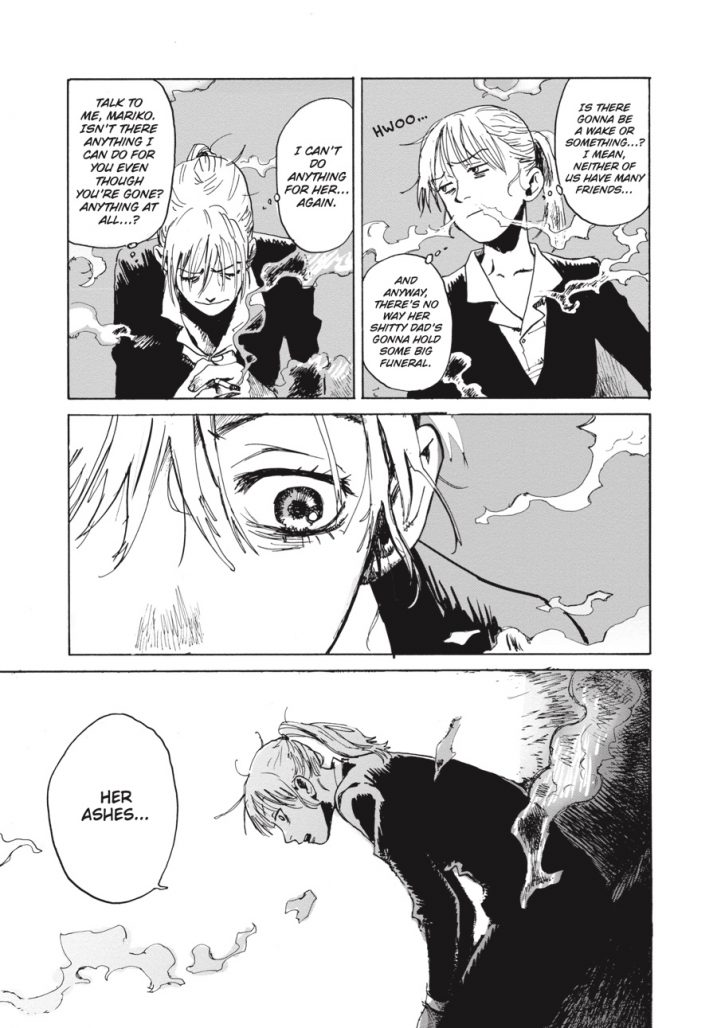
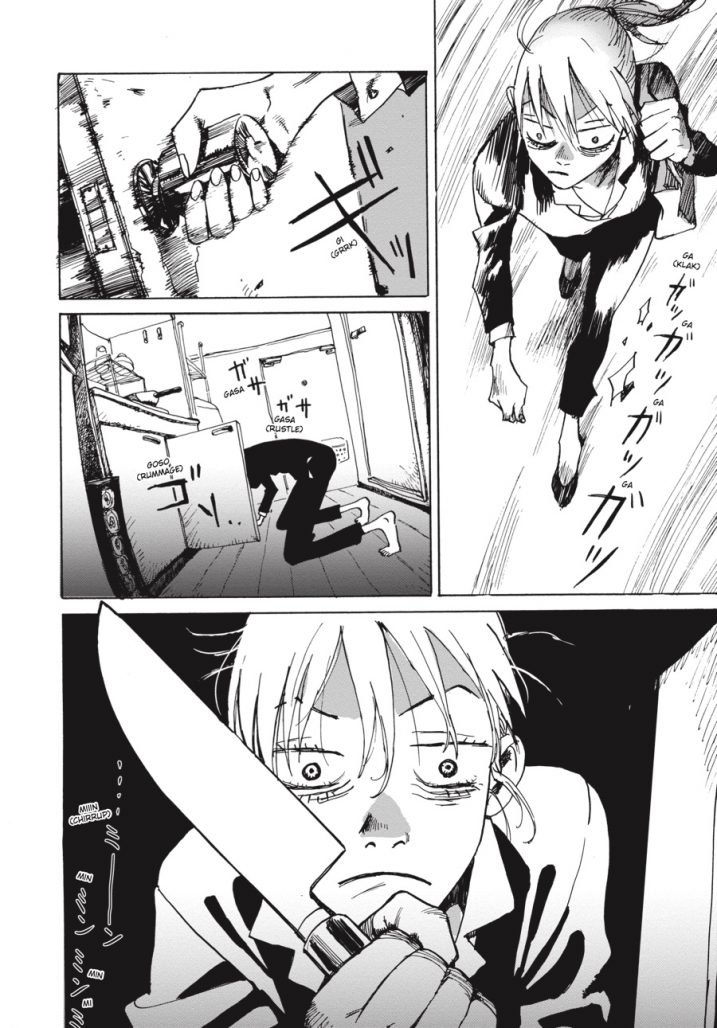
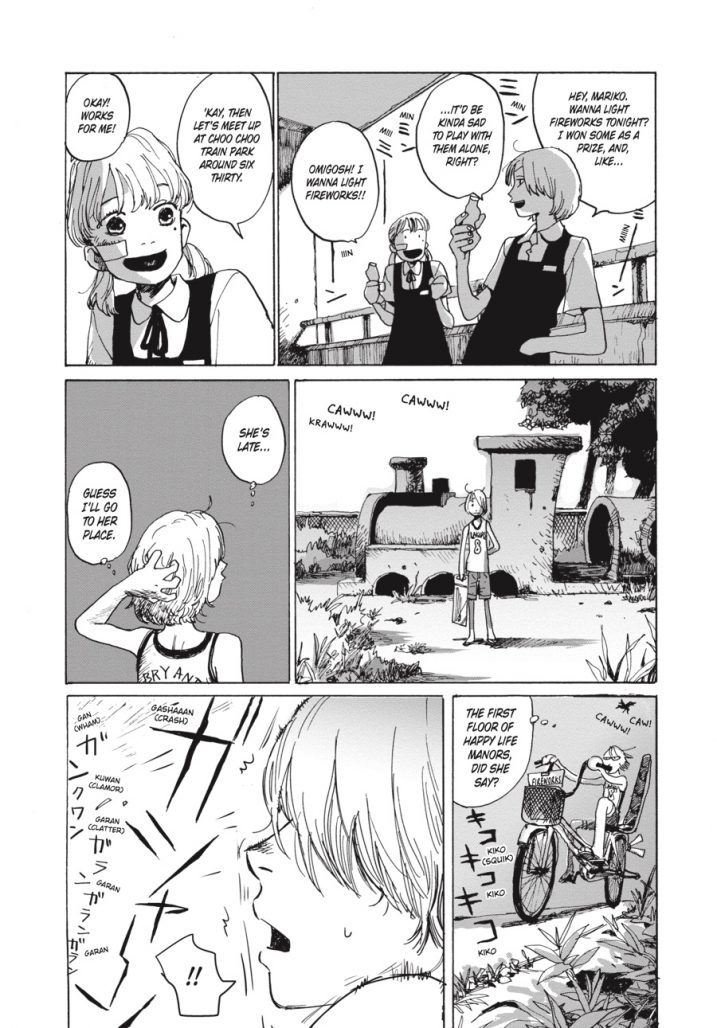
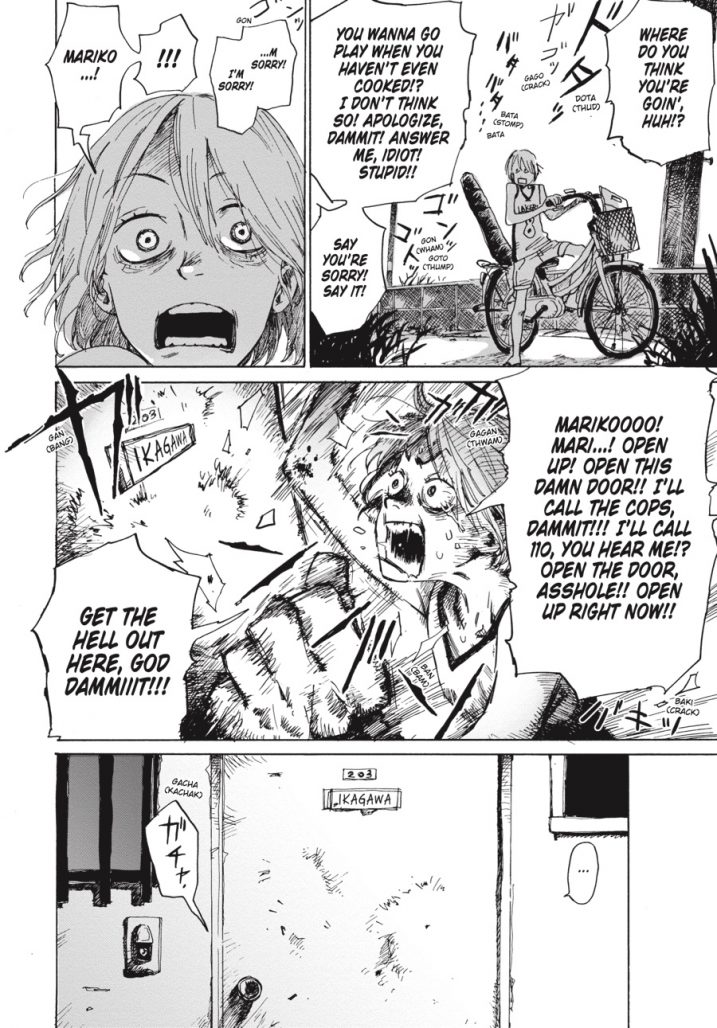
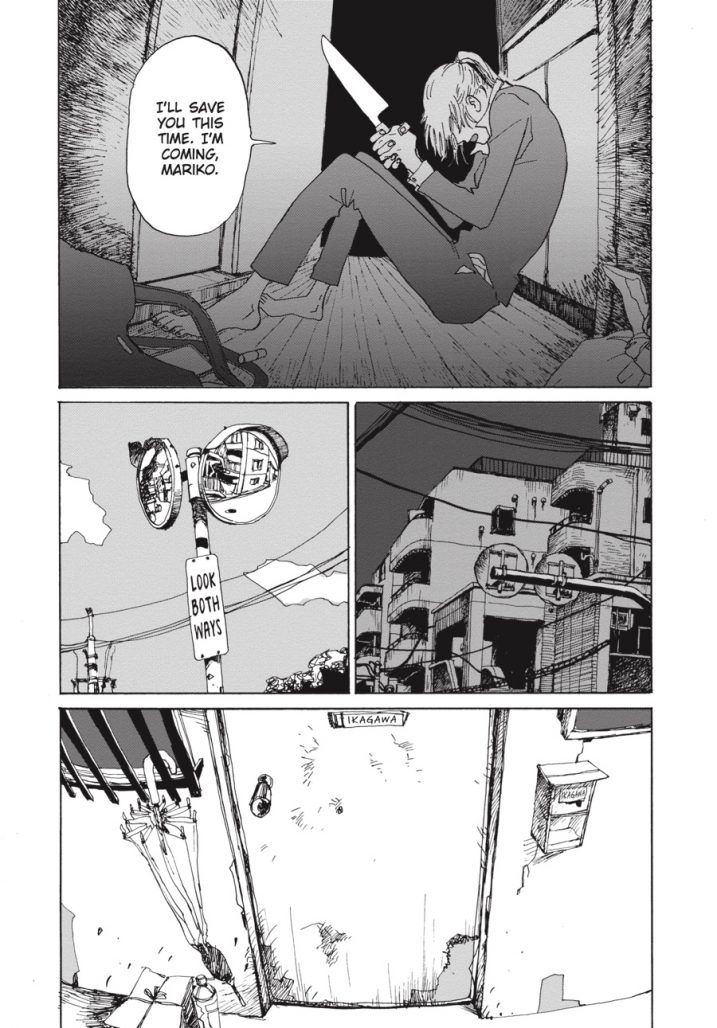
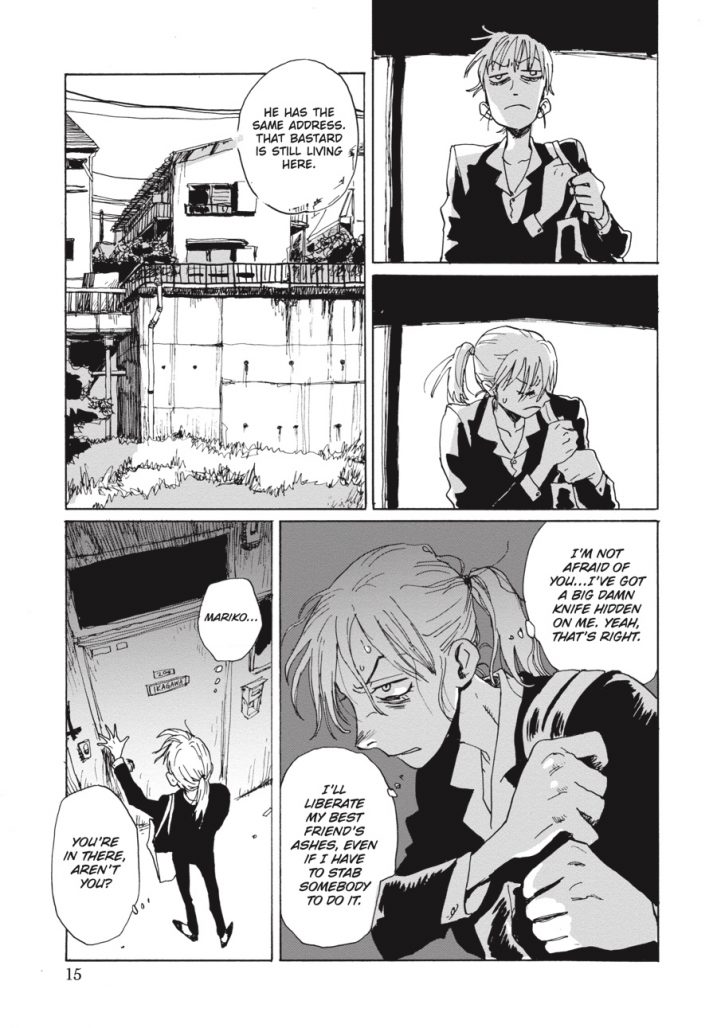
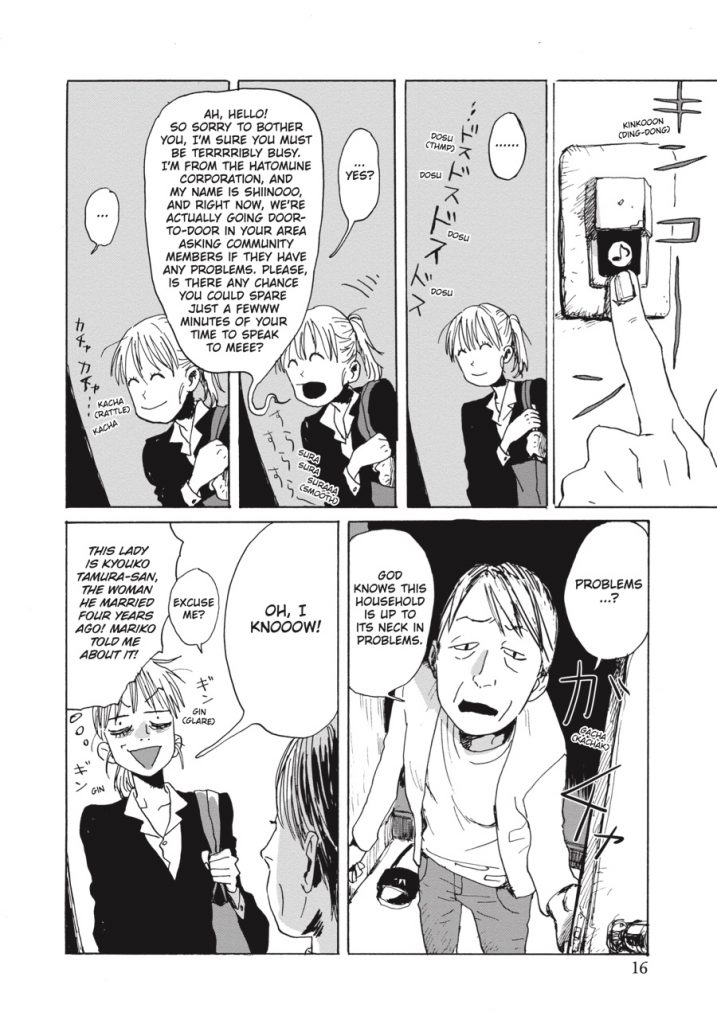
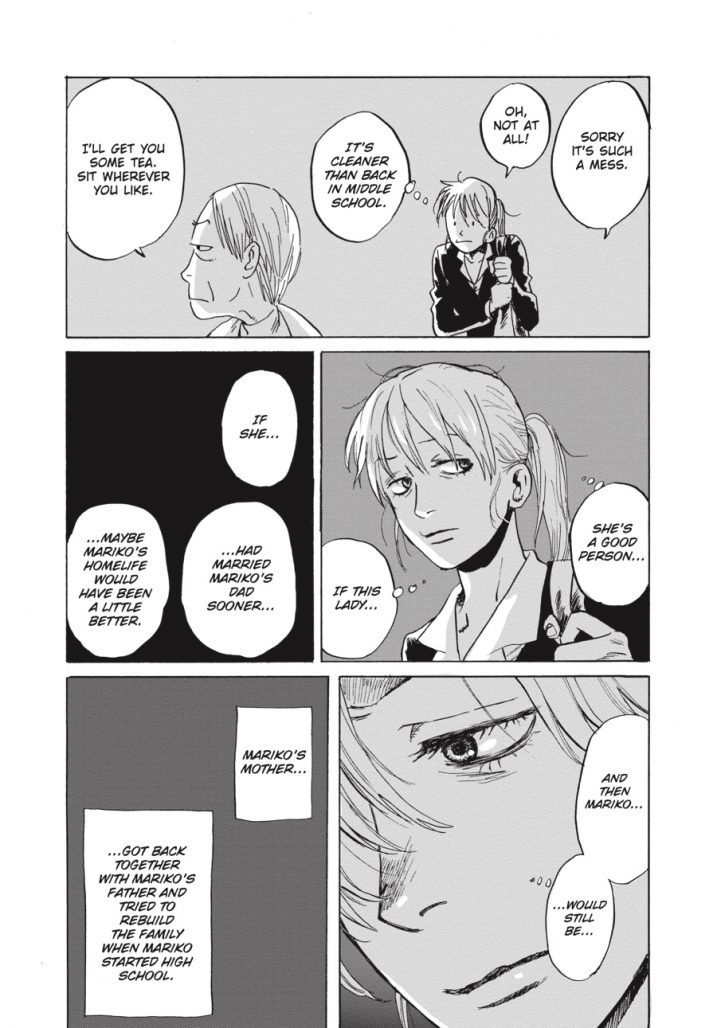
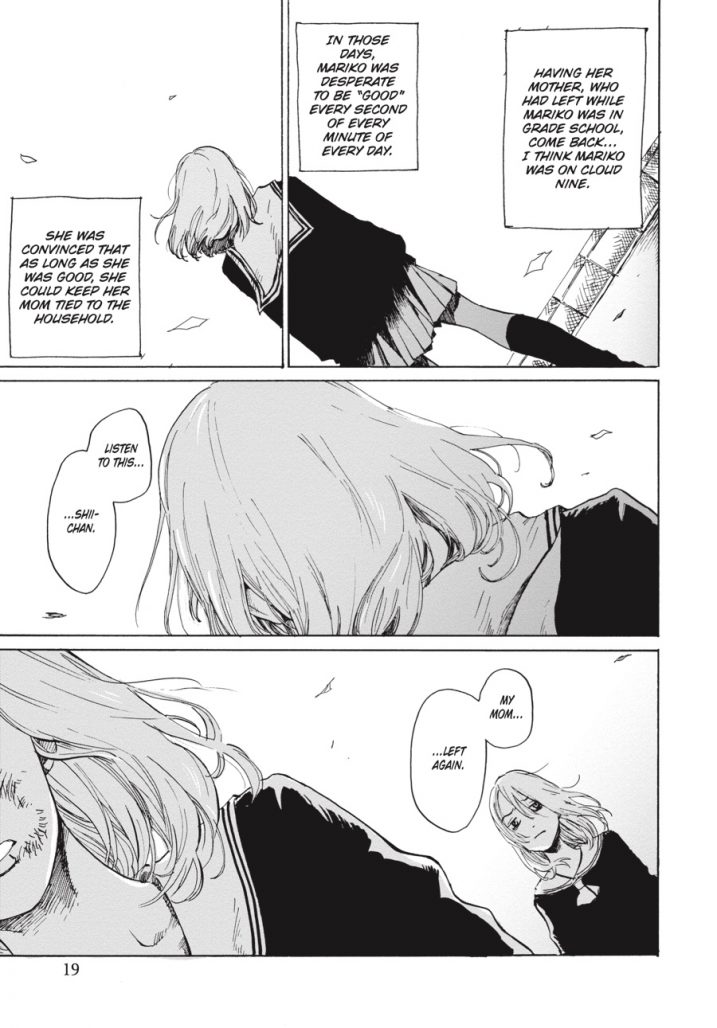
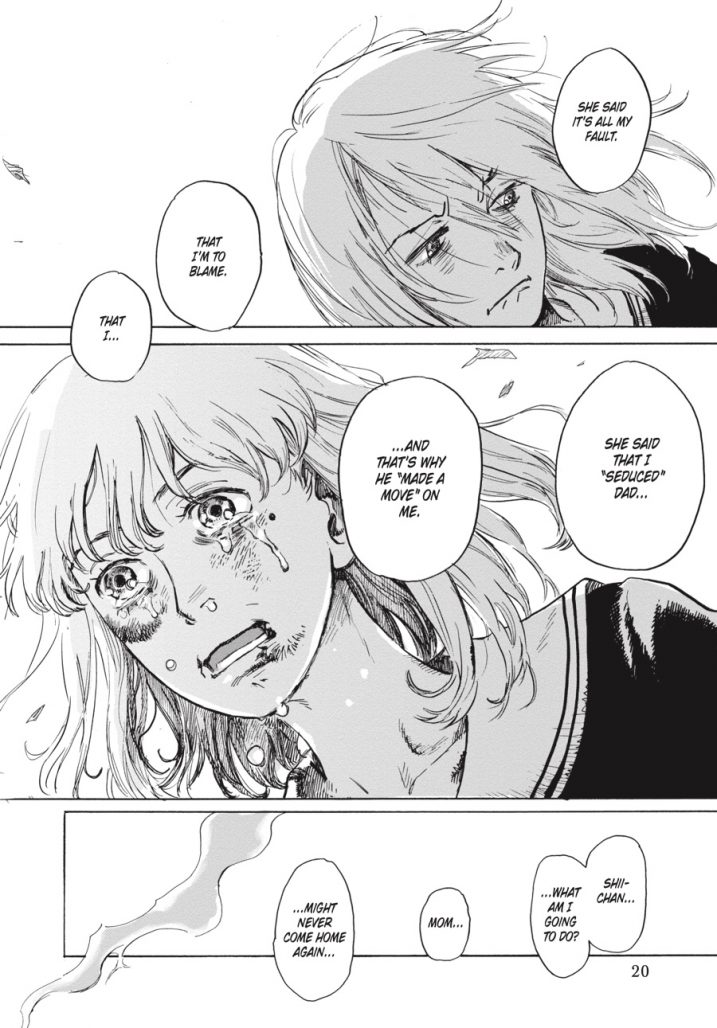
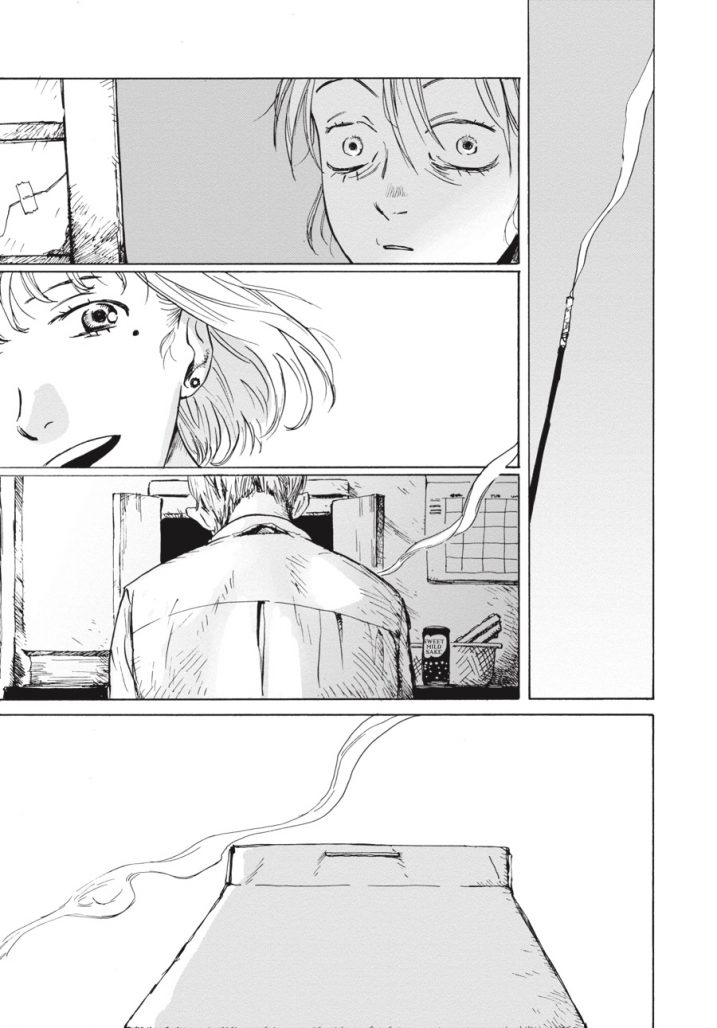
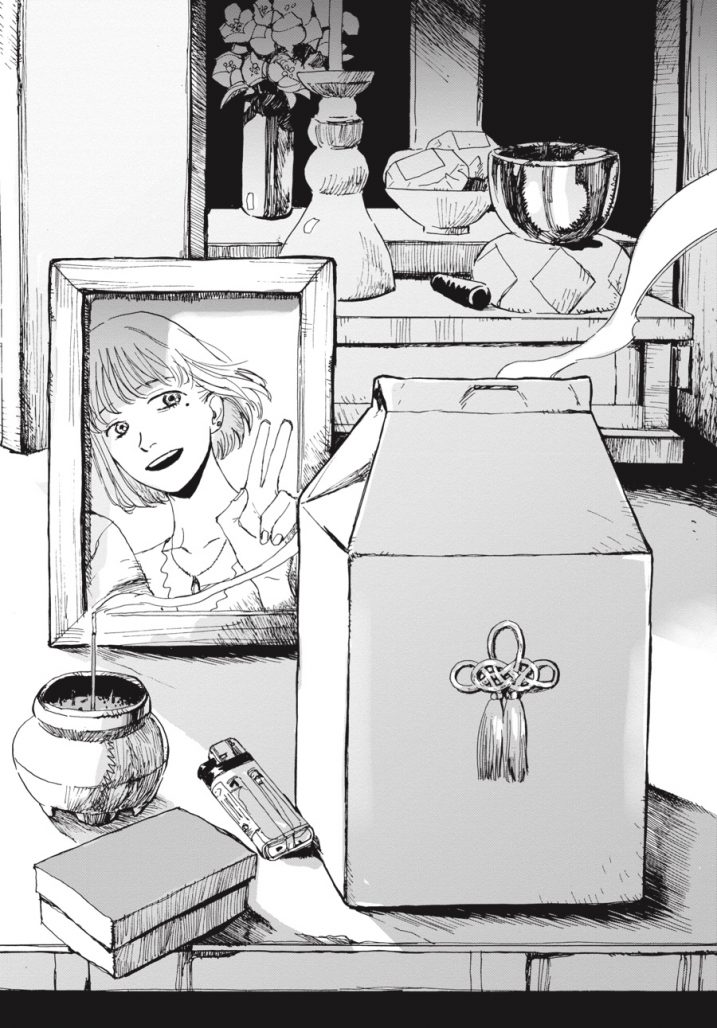
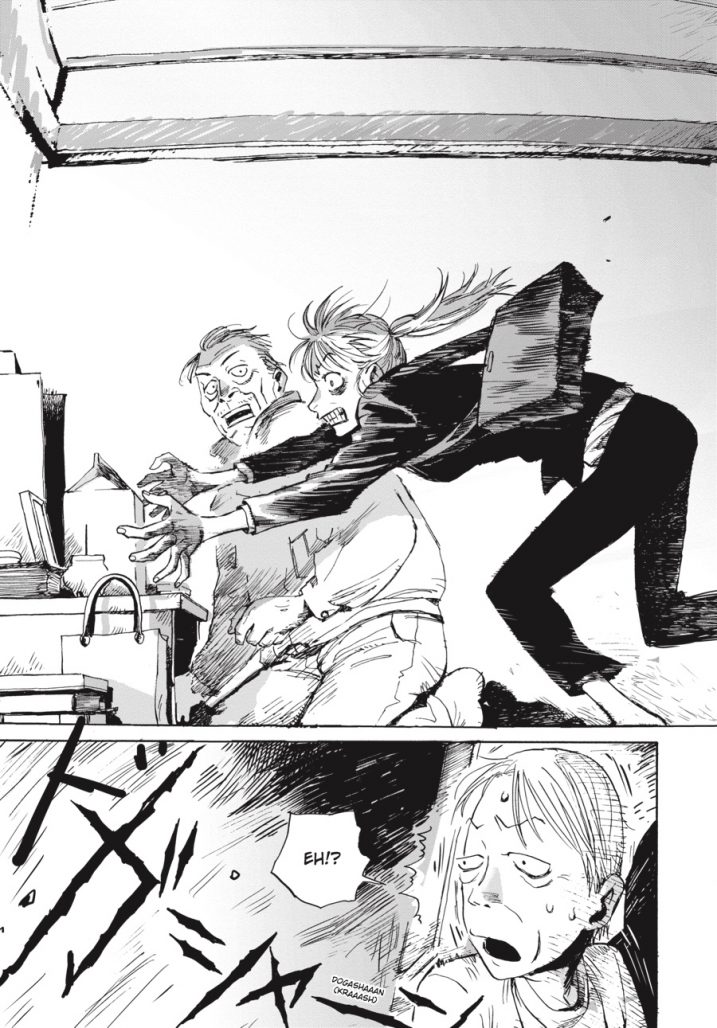
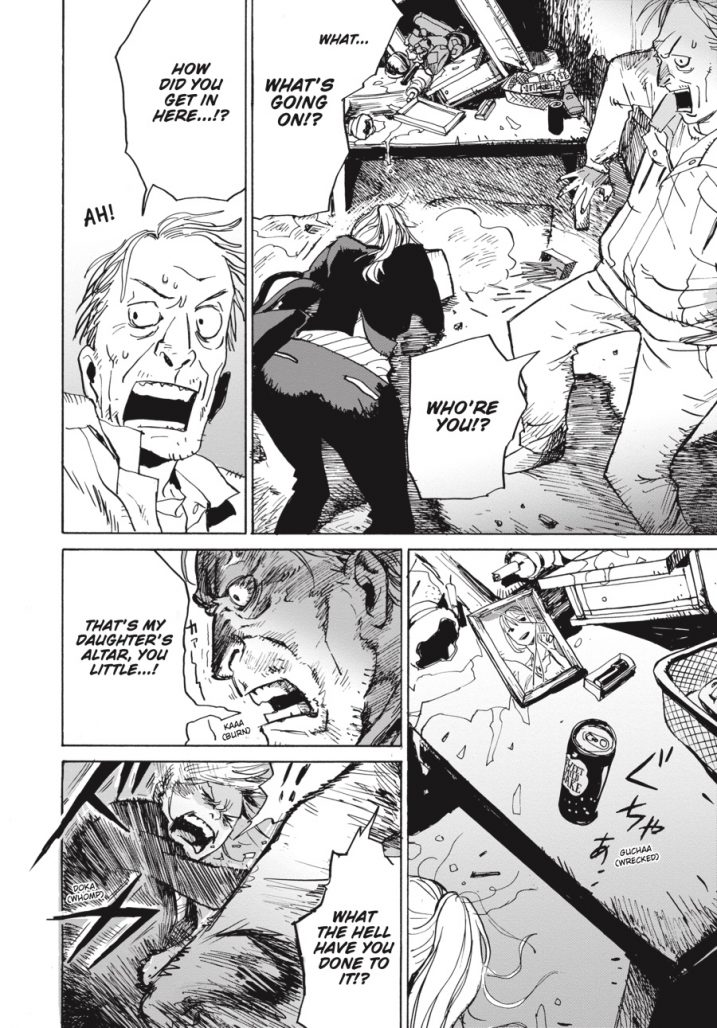
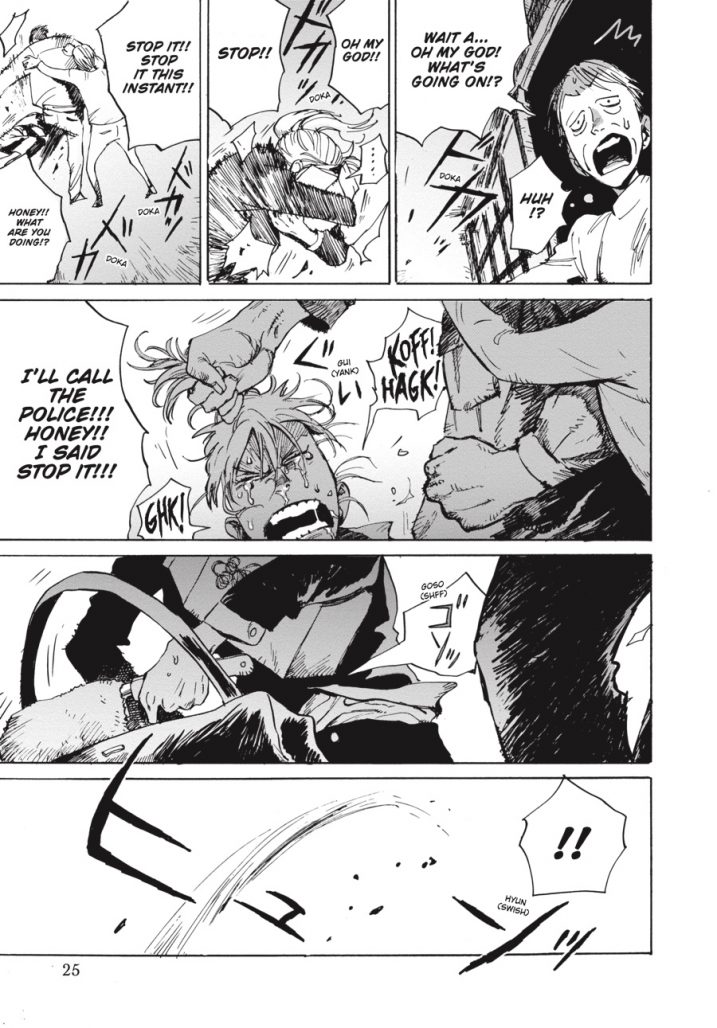
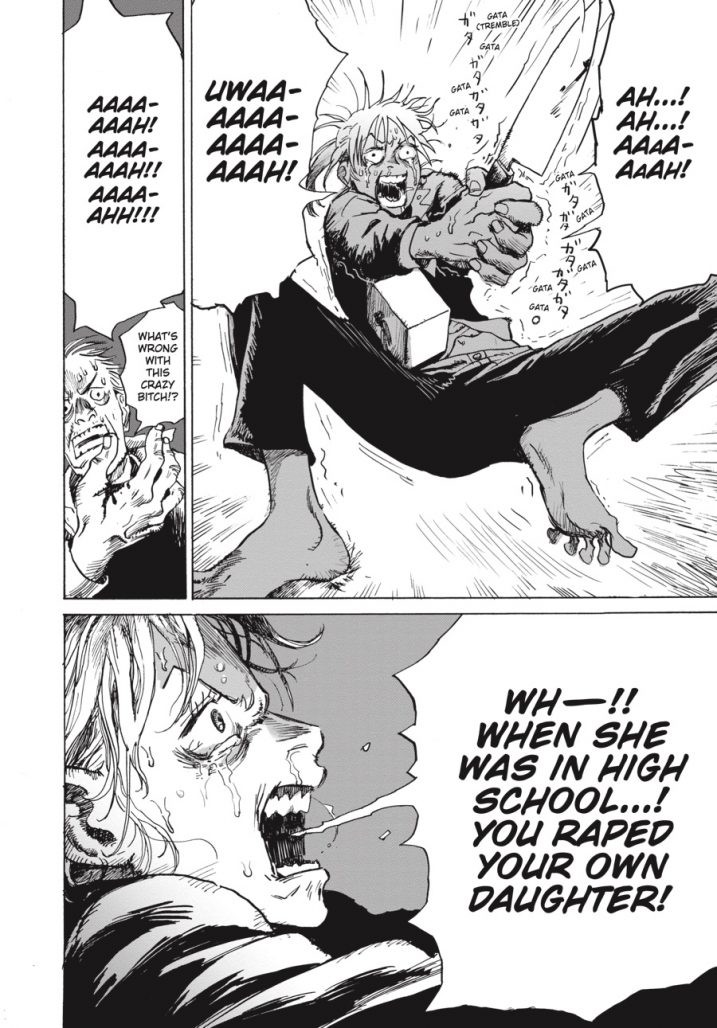
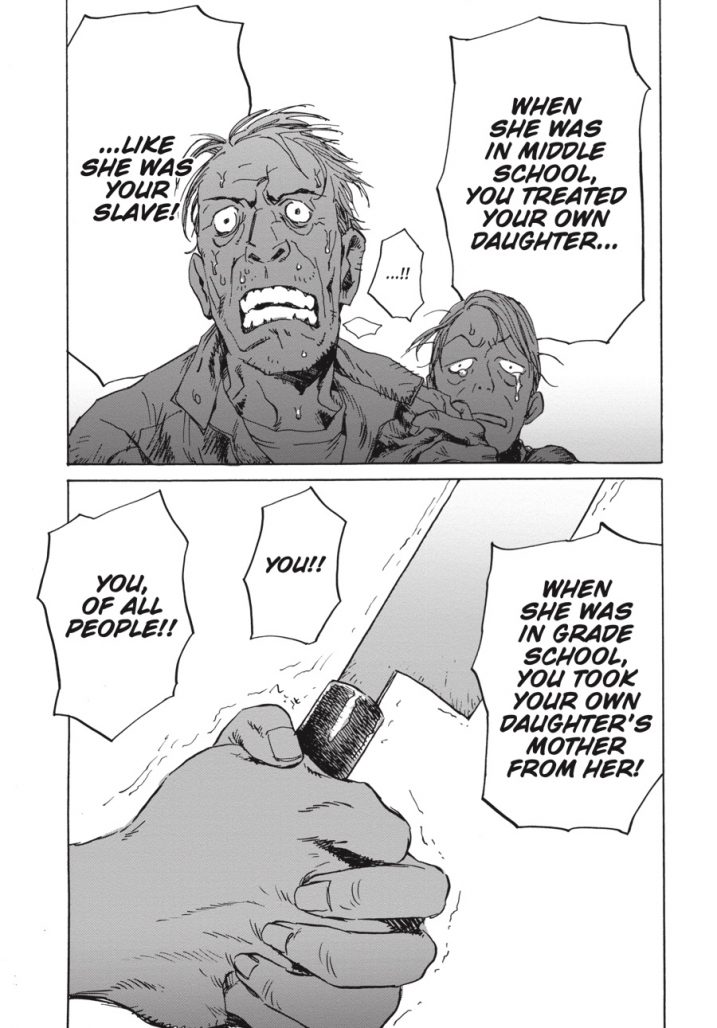
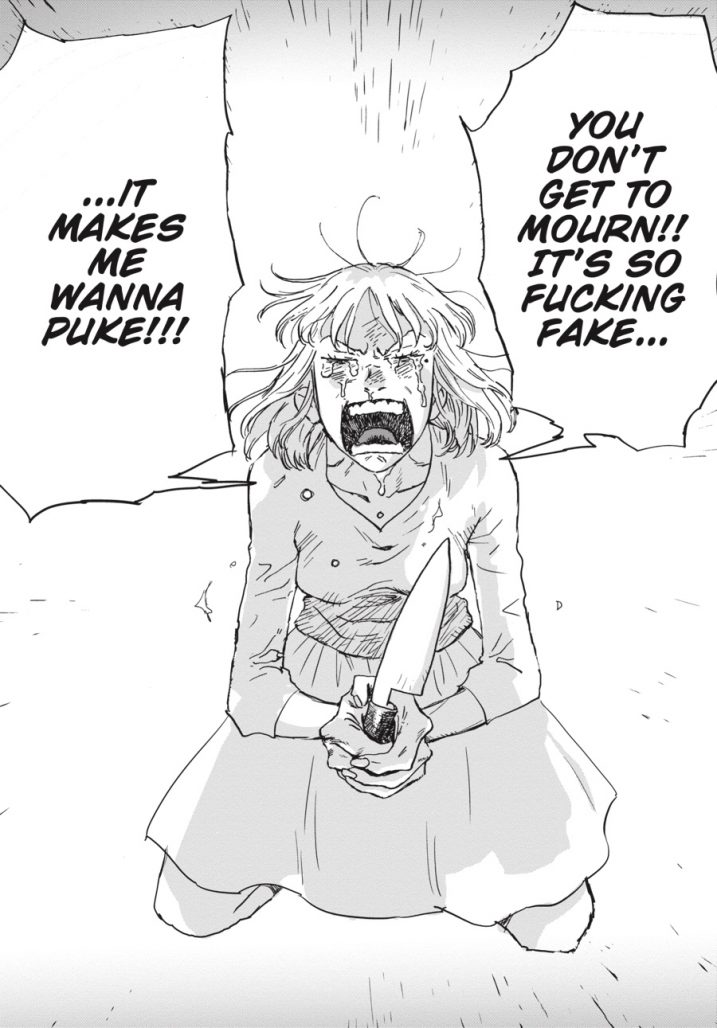
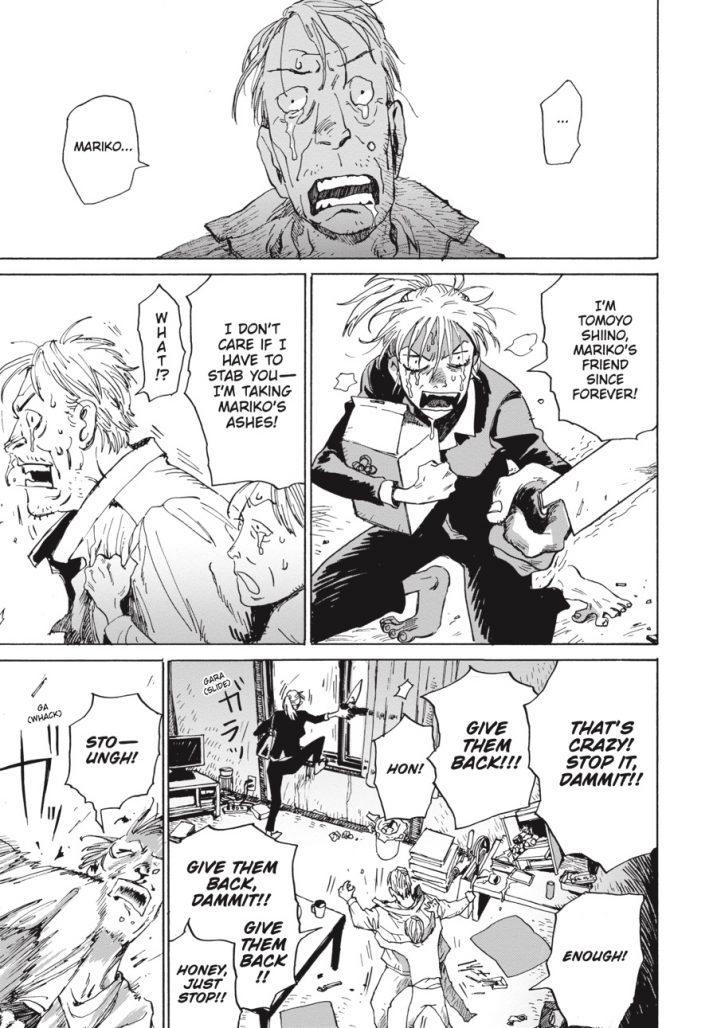
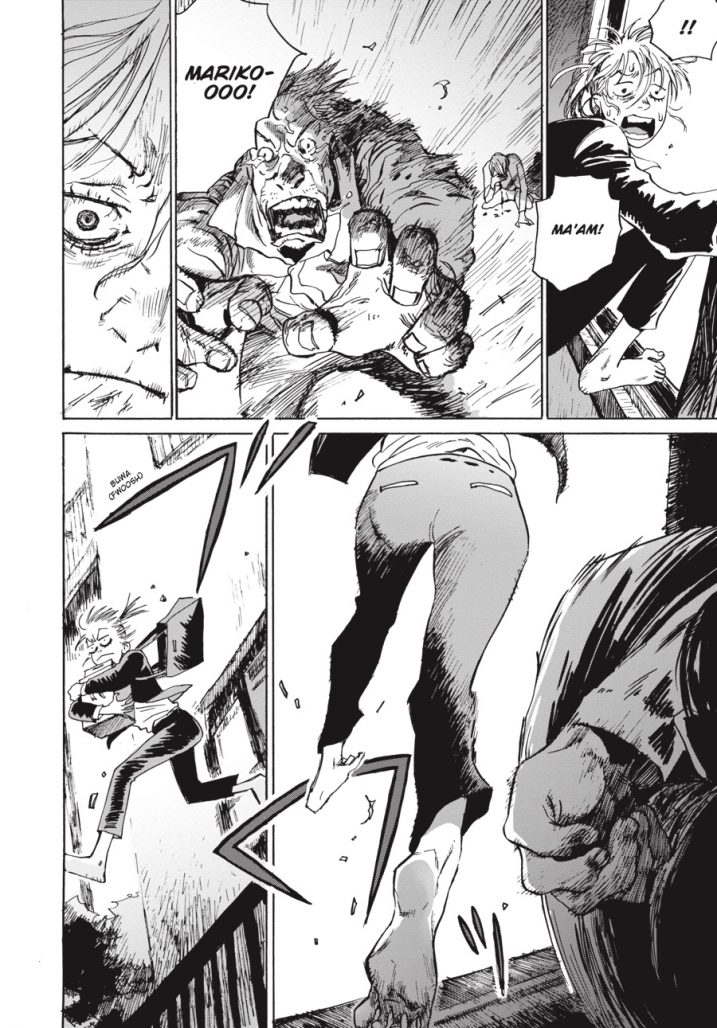
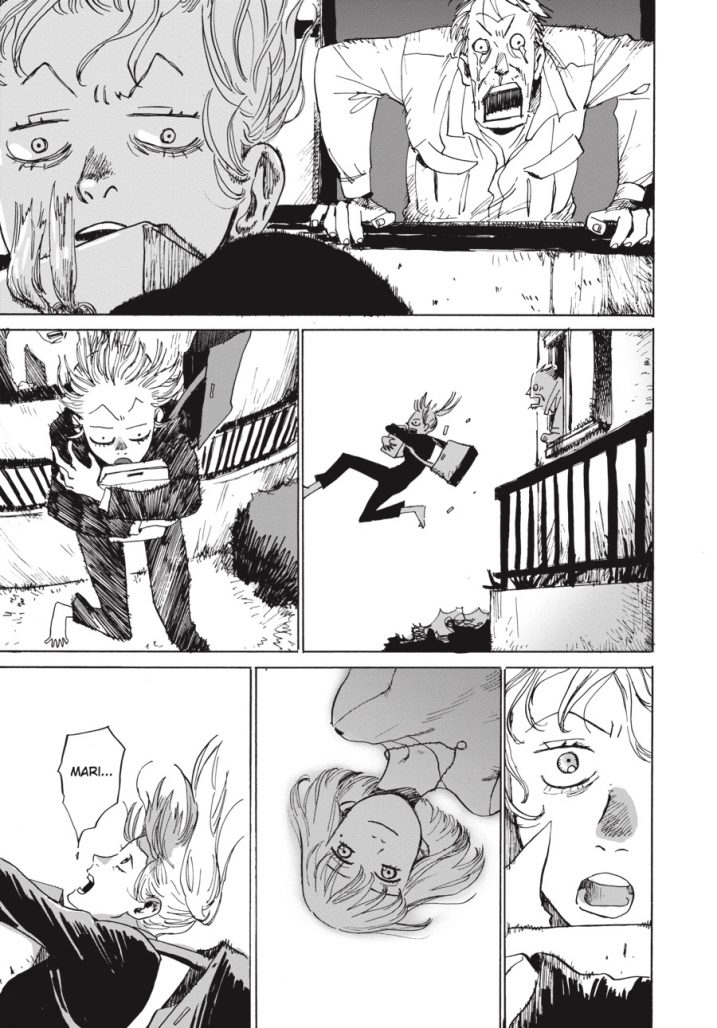
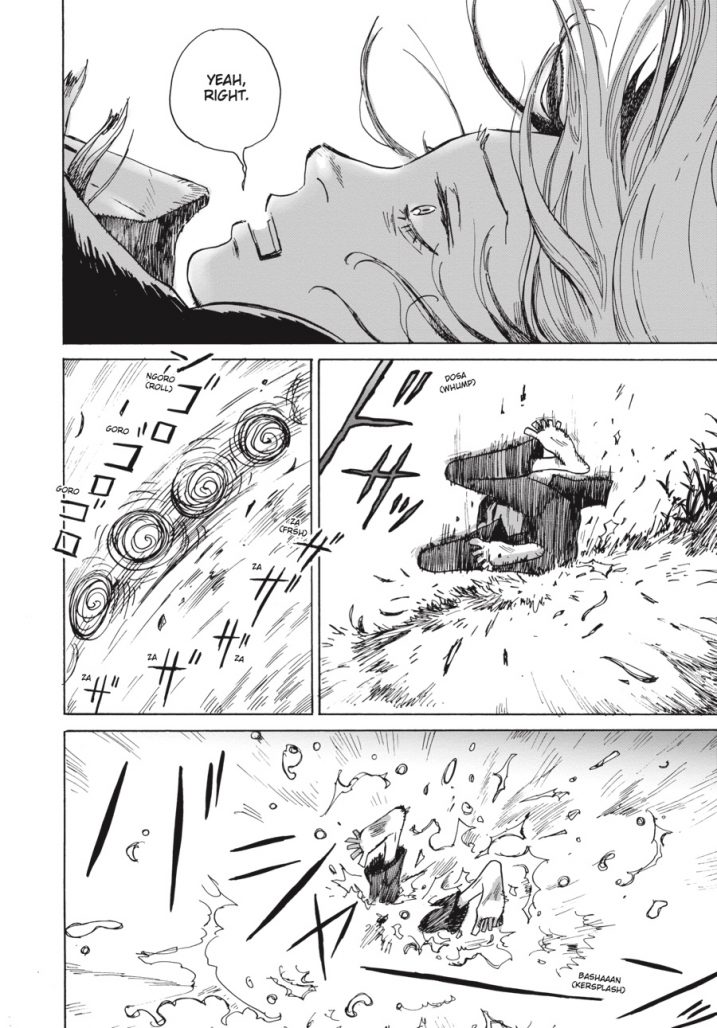
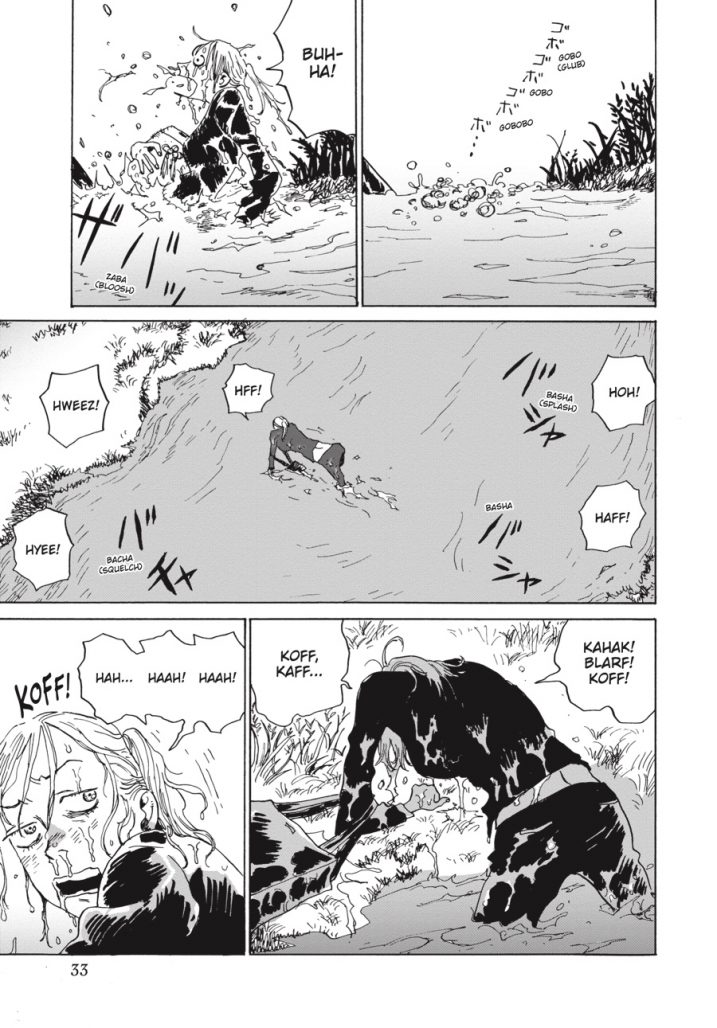
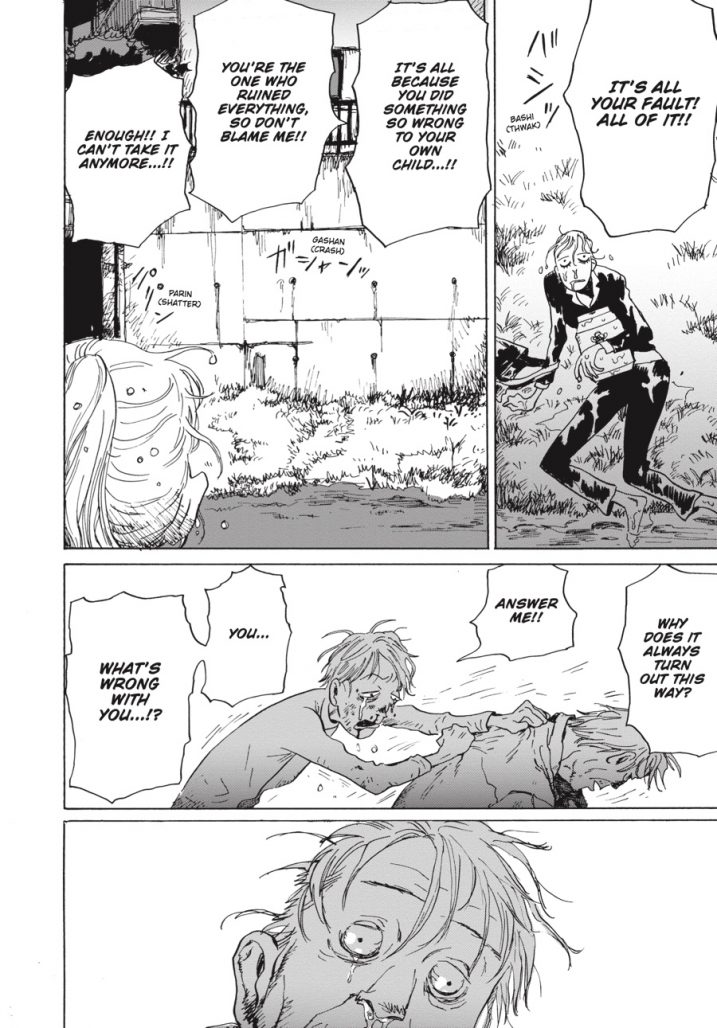
MY BROKEN MARIKO ©Waka Hirako 2020 / KADOKAWA CORPORATION


